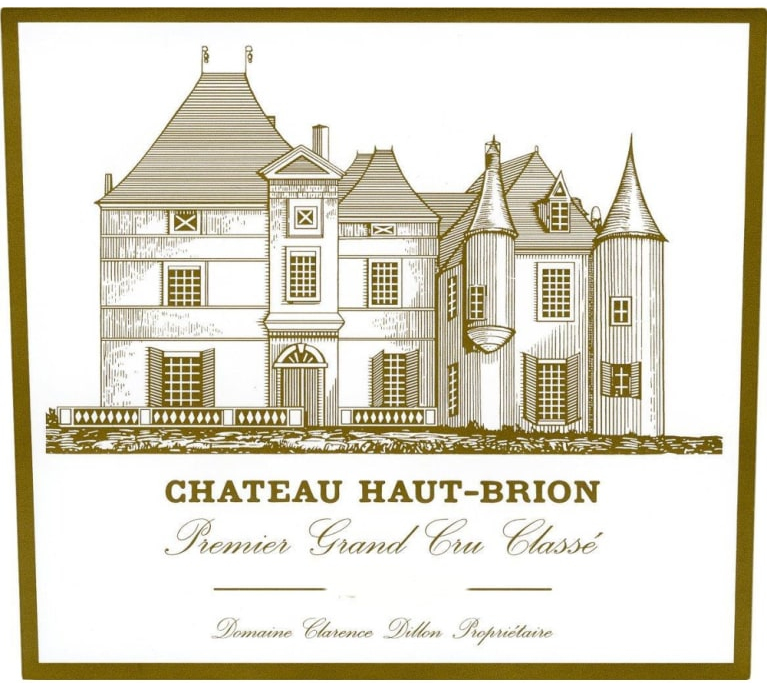Château Haut-Brion 2004
Review of the Estate
Château Haut-Brion is notable for its First Growth status, under both the 1855 and 1973 Mèdoc classifications, despite its geographical location in Graves. This mark of respect is due to the obsession with quality and continual winemaking improvements that have been the dominant modus operandi at Chateau Haut Brion over the past four centuries.
The modern estate grew from humble origins as a property known as Maison Noble d'Aubrion which was acquired by Jean de Pontac through his marriage to Jeanne de Bellon in 1525.
Pontac was responsible for expanding Chateau Haut-Brion, and creating an international market for the wines, the quality of which was noted by Samuel Pepys who wrote in April 1663,"here I drank a sort of French wine, called Ho Bryan, that hath a good and most particular taste that I never met with." However, Chateau Haut Brion was still known formally as Château Pontac until the late 18th Century when it eventually passed out of the Pontac family's hands.
As the first recorded First Growth to be imported into the United States, when Thomas Jefferson purchased six cases during his travels and sent them back to his home in Virginia, it is perhaps unsurprising that Chateau Haut-Brion was eventually purchased by an American. After a string of owners, financier Clarence Dillon acquired the estate in 1935. Chateau Haut Brion is currently owned by Domaine Clarence Dillon, which is a limited company and thereby prevents excessive divisions of the estate between successive generations. Presently, Prince Robert of Luxembourg is at the helm, with Jean-Philippe Delmas managing the viticultural aspects of the business.
As a First Growth, there is constant pressure to produce outstanding yet consistent wines and Château Haut-Brion has consistently embraced new technologies to meet this standard. In the 1960s, the estate pioneered the installation of stainless steel vats - the first of the First Growths to do so. This increased the reliability of the vinification process and positioned Chateau Haut Brion at the forefront of innovation in the Bordeaux region, producing a savoury wine which is both rich and intricate.

Vineyard
Surface area: 106.7 acres
Grape Varieties: 45% Cabernet Sauvignon, 37% Merlot and 18% Cabernet Franc
Average age of vines: 36 years
Density of plantation: 8,00 vines per hectare
Average yields: 35-45 hectoliters per hectare
Average cases produced: 11,000 per year
Plateau of maturity: 10 - 40 years
Château Haut-Brion 2004 Reviews / Tasting Notes
Neal Martin - The Wine Advocate
Point Score: 93
It has been a few years since I last tasted the 2004 Haut-Brion. Now at 12 years of age, it retains its deep color. The bouquet is "pleasant" if not as complex as the 2004 Latour, yet it's possibly just biding its time as it gradually opens with black fruit, black olive, even a touch of mint that might dupe you into thinking Pauillac. The palate is medium-bodied and very harmonious, almost caressing thanks to the Merlot lending that velvety texture. The second half changes tack, the Cabernet nudging the Merlot off the stage and delivering a more structured, possibly foursquare finish that is linear and correct. It is an excellent wine for the vintage although it will always be overshadowed by the 2005 inter alia. Maybe more personality just needs to develop? Tasted September 2016.
Wine Spectator
Point Score: 92-94
Classy aromas of flowers, toasty oak and berries follow through to a full-bodied palate, with fine tannins and a long finish. Seamless. Score range: 92-94
Stephen Tanzer - Vinous
Point Score: 92-95
(a blend of 61% merlot, 20% cabernet sauvignon and 19% cabernet franc) Deep full ruby. Cool, complex nose combines black raspberry, black cherry, blueberry, minerals and hot stones. Sweet, lush and densely packed; comes across as fresher than the 3.8 pH and 3 grams of acidity would suggest. Finishes with substantial but very suave tannins. The cabernet sauvignon component was reduced by some coulure at the end of the flowering, which Jean-Philippe Delmas described as "the equivalent of a first eclaircissage